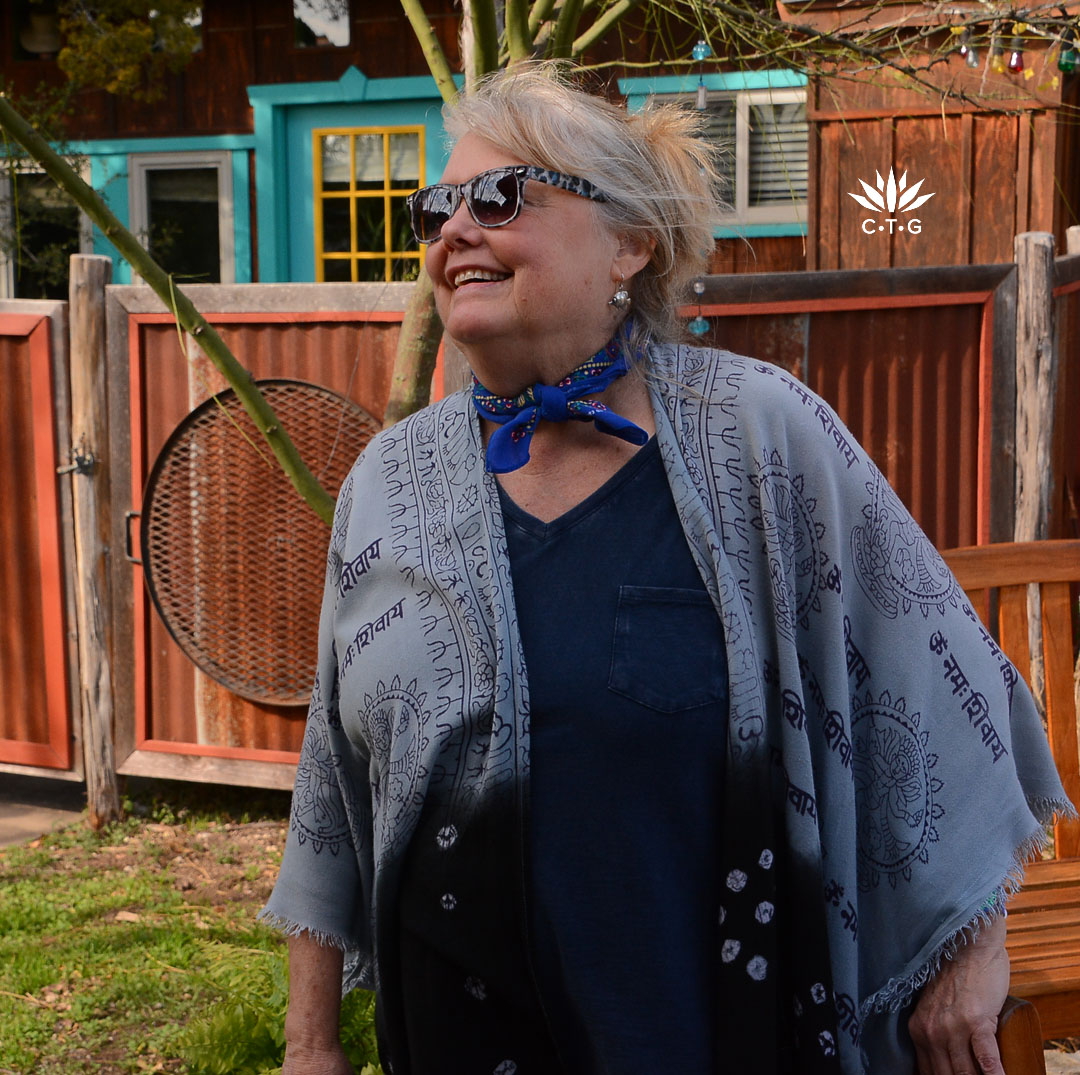[ad_1]
October 8, 2024
Naturally Lovely!

He didn’t realize it, however John Dromgoole was one among my first backyard mentors—through his Saturday morning radio program again then.
So, after I did lastly meet him and he jumped into the CTG common lineup, I used to be awestruck.
Later, in December 2019, we visited him and spouse Jane at their house backyard. David Stalker, backyard handyman, grabbed this image of us all. John captivated us with folksy tales of what obtained him began–from vegetation and organics to KLBJ-AM backyard present host and spinner of tunes and tales on Solar Radio.
When he and Jane began The Pure Gardener backyard middle, they included demonstration beds and borders to assist gardeners visualize designs with suitable vegetation.
Composting is nothing new in any respect, but it surely was definitely new to gardeners who solely threw a bunch of artificial fertilizers at their vegetation. What they actually wanted for wholesome vegetation, John defined, is soil nourished by compost.
Through the years, John has seen plenty of modifications. For one factor, native and hardy tailored vegetation are extra accessible. And though container vegetation have all the time been fashionable, extra gardeners are reaching for succulents.
Once we bumped into him at The Pure Gardener’s Butterfly Backyard final fall, he famous that new gardeners don’t ask for pesticides: they’re in search of vegetation that appeal to wildlife.
John and Jane’s backyard leads off this week’s episode, however right here’s our unique story! 
This week, Kirk Alston, The Pure Gardener’s plant purchaser, joins John Hart to swap just a few tales of modifications they’ve seen for the higher. Kirk famous that 10 years in the past, folks freaked out in the event that they noticed a caterpillar on a plant. Now, they verify the leaves for bonus caterpillars to deliver house a future butterfly with their plant.
And as of late, gardeners wish to nourish wildlife all yr, not simply throughout springtime’s sensations. Though bee balm on this Jarrell backyard blooms spring to summer season, pink yucca and mealy blue sage flower for a number of months to feed hummingbirds, butterflies and bees.
I actually consider that our gradual shift to extra resilient, waterwise vegetation higher ready us to deal with in the present day’s extra frequent excessive climate conditions. Plant could hunker down in prolonged drought and freeze, however they rally. As soon as established, this group–Lindheimer muhly, hamelia patens, Satisfaction of Barbados, anacacho orchid and white mistflower– stands as much as deep freezes, drought, and heavy rainfall.
One factor stays fixed: a love of edibles and herbs, together with annual colour for that pop of drama when perennials are resting. On this vignette, annual African blue basil borders cannas, with Mexican mint marigold, Hamelia patens and yucca past. In winter, we will swap out the basil for calendula, nasturtiums, pansies, and viola.
On CTG, it’s particularly rewarding that viewers from throughout get enthusiastic about their wildlife discoveries. Nick Martin described this cute image as “a bee taking a nap in coneflowers.” When most of his coneflowers didn’t make it final winter, he planted natives that he hadn’t grown earlier than. He’s obtained Salvia greggii, Mexican hat, blackfoot daisies, bee balm, and so many extra! He informed us, “It’s superb how a lot you possibly can pack right into a small area.”
A very huge deal: We’ve come to know that butterflies and moths want host vegetation to lift their younger, choosy eaters that fiercely restrict their selections. By now we all know that monarch butterflies solely eat milkweeds. However golly, these seeds are difficult to germinate! Sonia Koschoreck, founding father of The Monarch Sanctuary Challenge, reveals us tips on how to do it.
And, pals, let’s all the time keep in mind that gardens are the place we will categorical ourselves and discover pleasure that wants no validation aside from from inside.
Watch now!
Thanks for stopping by!
Linda
[ad_2]


